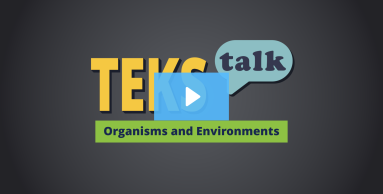
Knowledge and Skills Statement
Research
Seymoure, Brett, Karla Moeller, Adrienne Stahlschmidt, and Jason Borchert. “Our Watery World: Teaching Middle School Students About Biodiversity." Science Scope 36, no. 8 (2013):72–78. https://www.researchgate.net/publication/265470764_Our_watery_world_Teaching_middle-school_students_about_biodiversity
Summary: "Our Watery World: Teaching Middle School Students About Biodiversity" relates the dynamic nature of cohesion and adhesion of water molecules to the various needs of organisms and further connects the abundance of water to increased biodiversity in an ecosystem. A suggested field investigation is provided using a 5E learning model (Engage, Explore, Explain, Elaborate, Evaluate) with additional suggested modifications to accommodate classroom settings.
